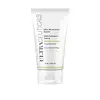What's inside
What's inside
 Key Ingredients
Key Ingredients

 Benefits
Benefits

 Concerns
Concerns

No concerns
 Ingredients Side-by-side
Ingredients Side-by-side

Water
Skin ConditioningButyrospermum Parkii Butter
Skin ConditioningC12-15 Alkyl Benzoate
AntimicrobialGlycerin
HumectantMethylpropanediol
SolventGlyceryl Behenate
EmollientCyclopentasiloxane
EmollientCetyl Alcohol
EmollientGlyceryl Stearate
EmollientSodium Lactate
BufferingDimethicone
EmollientUrea
BufferingSodium Hyaluronate
HumectantCholesterol
EmollientLinoleic Acid
CleansingCeramide NP
Skin ConditioningLinolenic Acid
CleansingSodium PCA
HumectantTocopherol
AntioxidantHydroxyethyl Acrylate/Sodium Acryloyldimethyl Taurate Copolymer
Emulsion StabilisingPEG-75 Stearate
Xanthan Gum
EmulsifyingCeteth-20
CleansingSteareth-20
CleansingPolysorbate 60
EmulsifyingSorbitan Isostearate
EmulsifyingCocos Nucifera Oil
MaskingVanillin
MaskingPhenylpropanol
MaskingCaprylyl Glycol
EmollientDisodium EDTA
Sodium Hydroxide
BufferingLactic Acid
BufferingWater, Butyrospermum Parkii Butter, C12-15 Alkyl Benzoate, Glycerin, Methylpropanediol, Glyceryl Behenate, Cyclopentasiloxane, Cetyl Alcohol, Glyceryl Stearate, Sodium Lactate, Dimethicone, Urea, Sodium Hyaluronate, Cholesterol, Linoleic Acid, Ceramide NP, Linolenic Acid, Sodium PCA, Tocopherol, Hydroxyethyl Acrylate/Sodium Acryloyldimethyl Taurate Copolymer, PEG-75 Stearate, Xanthan Gum, Ceteth-20, Steareth-20, Polysorbate 60, Sorbitan Isostearate, Cocos Nucifera Oil, Vanillin, Phenylpropanol, Caprylyl Glycol, Disodium EDTA, Sodium Hydroxide, Lactic Acid
Ingredients Explained
These ingredients are found in both products.
Ingredients higher up in an ingredient list are typically present in a larger amount.
Glycerin is already naturally found in your skin. It helps moisturize and protect your skin.
A study from 2016 found glycerin to be more effective as a humectant than AHAs and hyaluronic acid.
As a humectant, it helps the skin stay hydrated by pulling moisture to your skin. The low molecular weight of glycerin allows it to pull moisture into the deeper layers of your skin.
Hydrated skin improves your skin barrier; Your skin barrier helps protect against irritants and bacteria.
Glycerin has also been found to have antimicrobial and antiviral properties. Due to these properties, glycerin is often used in wound and burn treatments.
In cosmetics, glycerin is usually derived from plants such as soybean or palm. However, it can also be sourced from animals, such as tallow or animal fat.
This ingredient is organic, colorless, odorless, and non-toxic.
Glycerin is the name for this ingredient in American English. British English uses Glycerol/Glycerine.
Learn more about GlycerinSodium Hyaluronate is hyaluronic acid's salt form. It is commonly derived from the sodium salt of hyaluronic acid.
Like hyaluronic acid, it is great at holding water and acts as a humectant. This makes it a great skin hydrating ingredient.
Sodium Hyaluronate is naturally occurring in our bodies and is mostly found in eye fluid and joints.
These are some other common types of Hyaluronic Acid:
Learn more about Sodium HyaluronateSodium PCA is the sodium salt of pyroglutamic acid. It is naturally occurring in our skin's natural moisturizing factors where it works to maintain hydration.
The PCA stands for pyrrolidone carboxylic acid, a natural amino acid derivative.
This ingredient has skin conditioning, anti-inflammatory, and humectant properties. Humectants help hydrate your skin by drawing moisture from the air. This helps keep your skin moisturized.
Learn more about Sodium PCAWater. It's the most common cosmetic ingredient of all. You'll usually see it at the top of ingredient lists, meaning that it makes up the largest part of the product.
So why is it so popular? Water most often acts as a solvent - this means that it helps dissolve other ingredients into the formulation.
You'll also recognize water as that liquid we all need to stay alive. If you see this, drink a glass of water. Stay hydrated!
Learn more about Water